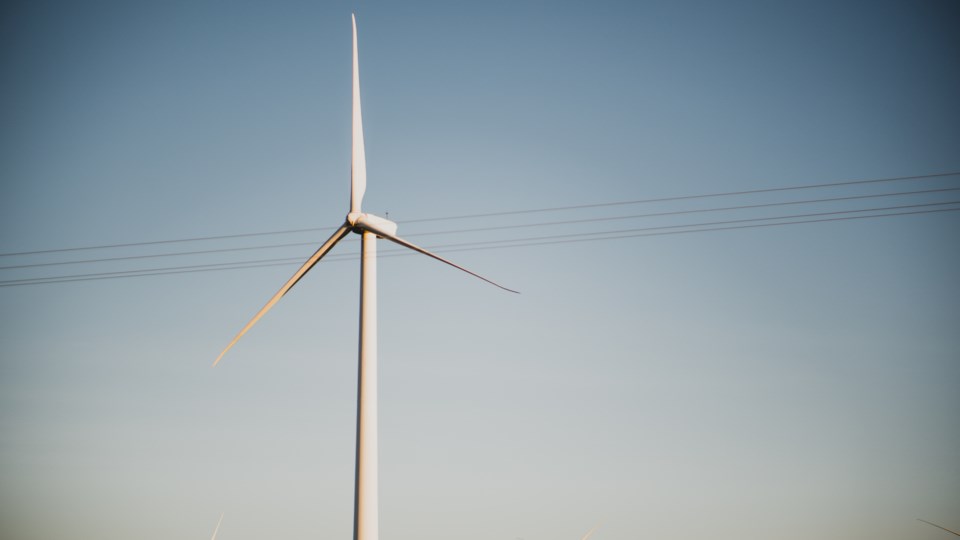After several weeks of testing, the 225-megawatt Roundhouse Wind Energy Center located north of the Colorado-Wyoming border has begun commercial operations, Platte River Power Authority announced in a news release Thursday.
With the wind farm fully operational, nearly 50% of energy delivered to Platte River Power Authority’s owner communities, which include Longmont, comes from noncarbon sources, according to PRPA.
The project began after Platte River’s board directed staff to add new wind power capacity to the power provider’s portfolio mid-2017. It nearly triples the amount of wind power Platte River delivers to its owner communities of Estes Park, Fort Collins, Longmont and Loveland, according to PRPA.
While the original agreement called for 150 megawatts of energy, Platte River in June 2019 committed to acquire the remaining 75 megawatts.
“We’re pleased to take yet another step toward achieving our noncarbon energy goals. We appreciate our partnership with NextEra Energy and the opportunity to deliver more noncarbon energy to our owner communities,” Jason Frisbie, general manager and CEO of Platte River, stated in the news release.
The project is 10 miles north of Platte River’s Rawhide Energy Station in Wellilngton, and encompasses approximately 20,000 acres. The site features 82 General Electric wind turbines, capable of producing up to 225 MW of output and is estimated to produce enough energy to power approximately 100,000 homes per year, according to the release.
The project is owned by a subsidiary of NextEra Energy Resources, LLC, who acquired early stage development rights for a portion of the project from a joint venture of Enyo Renewable Energy and MAP Renewable Energy.
"We are pleased to work with our partners at Platte River Power Authority to bring this facility online and deliver unprecedented value to its customers," Matt Handel, senior vice president of development for NextEra Energy Resources, the world's largest generator of renewable energy from the wind and the sun, stated in the release. "This project also brings significant economic benefit to the region, creating jobs and providing additional tax revenue to the communities that host it."
A 230-kilovolt generator outlet that will be purchased by Platte River carries power from the Roundhouse project to a transmission interconnection at its Rawhide Energy Station. Ownership of the transmission line ensures exclusive energy delivery to Platte River’s owner communities through the duration of the 22-year power purchase agreement, according to PRPA.
“Combining the purchase of the generator outlet with the use of PPAs is one of the many strategies Platte River is pursuing to achieve a 100% noncarbon energy mix by 2030 in an affordable and reliable way,” Frisbie stated.
Roundhouse is among two noncarbon energy projects Platte River will add to its portfolio in 2020. The 22-megawatt Rawhide Prairie Solar project with 2 megawatt-hours of battery storage is expected to come online in the fall. With the addition of these projects to Platte River’s energy mix, approximately 50% of the energy delivered to the owner communities will come from noncarbon resources.
Earlier this month, Platte River announced a coal-fired plant that helped supply Longmont’s energy needs for over 35 years is headed for early retirement to make way for noncarbon sources: Rawhide Unit 1 will cease producing electricity by 2030, 16 years before its planned retirement date.
Rawhide Unit 1, located near Wellington, began commercial operations in April 1984 and used coal extracted from the Antelope Mine in Wyoming and Powder River Basin, which straddles Montana and Wyoming.
The Platte River Power Authority governing board in 2018 approved a Resource Diversification Policy, calling for a 100% noncarbon energy mix by 2030, and planners began planning a future without its coal-fired unit, PRPA officials said.
In January 2018, Longmont City Council approved a resolution adopting a goal of having 50% of the city's electricity generated by non-carbon sources by 2022 and 100% generated from renewable sources by 2030.



